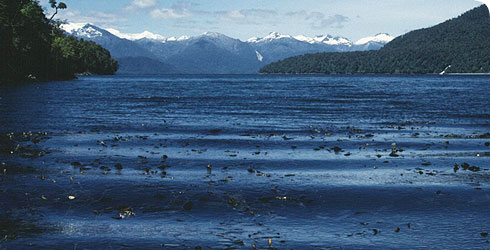Distribution
Macrocystis pyrifera forms dense forests in many parts of the world, including the cooler waters of the northeast Pacific (Alaska to Baja, California), the southern shores of South America, many Southern Ocean islands, and isolated areas of South Africa, southern Australia, and New Zealand.
Its distribution is greatly influenced by physical factors and it usually grows in the following conditions:
- clean and clear coastal waters
- temperature less than 20ºC
- nutrient concentration high
- water motion moderate
Its geographical limits are usually governed by the highest summer sea surface temperature.
Well-developed kelp forests are threatened by herbivorous grazers such as sea urchins, which can switch from grazing on detritus and drift weed to destructively grazing Macrocystis, leading to deforestation.
Various factors are thought to contribute to the sea-urchins’ switch in diet including:
- extensive recruitment of grazers
- low amount of drift algae
- over-fishing
- loss of urchin predators
Several hypotheses concerning the interactions between this kelp, sea urchins and El Niño events have been proposed to explain the extreme disruption of kelp forest communities in the past.
Toolbox
Glossary
Abalone
Edible sea snails.
Alginates
A compound rendered from seaweed that can be used to make temporary casts.
Fronds
Leaf-like parts of the seaweed.
Holdfasts
Root-like structures that anchors the seaweed to a substrate.
Macroscopic
A size large enough to be visible with the naked eye.
Microscopic
A size so small that is only visible with a lens or microscope.
